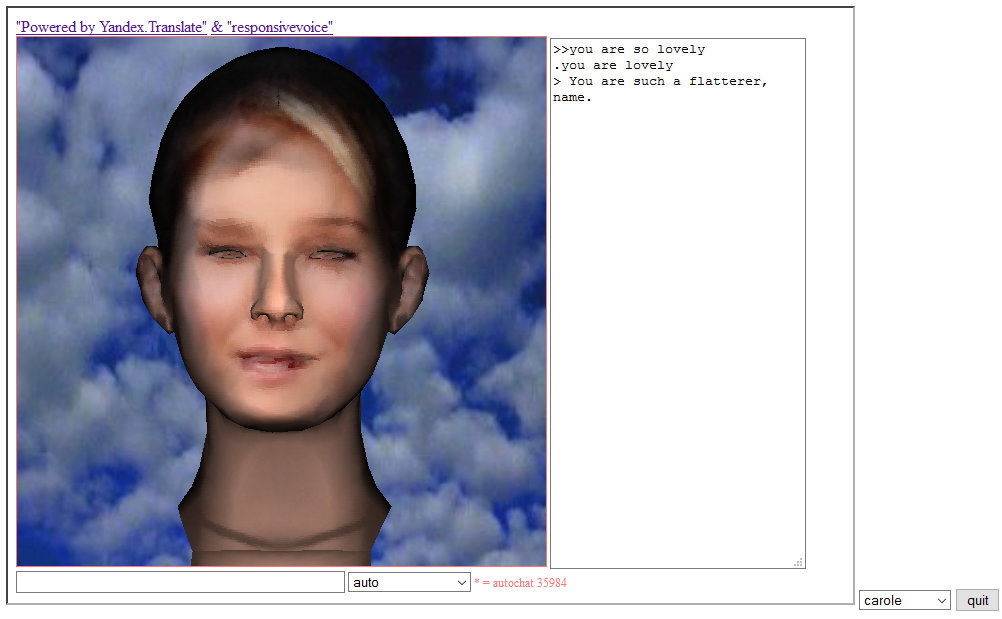
They have to understand the doctor’s questions no matter how they are phrased, therefore, scientists working in laboratories use speech processing and natural language processing (NLP), in order to simulate the way patients are speaking to doctors.ĭigital Animated Avatar, DIANA, is a simulated patient in a simulated doctor’s office projected life-size onto a wall in the Virtual Education and Surgical Simulation Laboratory (V.E.S.S.L.) at Georgia Health Sciences University. Research applications for avatarsĪvatars are becoming very useful while serving in medical industry as virtual patients. Nowadays, this digital avatar allows Ford to improve quality, safety and ergonomics in factories before an assembly line is built. Department of Defense at the University of Iowa as part of the Virtual Soldier Research (VSR) program to help reduce physical strain on soldiers. Originally Santos was created for the U.S. Therefore, it allows manufacturing engineers at Ford to make adjustments until they have found the optimal technique to get the job done. For example, Santos can perform a task and tell whether over months and years it will cause back strain. Santos can autonomously walk, talk and answer questions. As presented on the picture, it constitutes a highly realistic virtual worker at Ford, which simulates motion and records the actual physical strains of reaching, lifting and stretching. Cassandra demonstrates multimodal interaction (pointing and speech), emotions and gestural elements.Īnother great example of an avatar is Santos,which represents the culmination of years of study in modelling, multi-body dynamics and robotics, heralded by ergonomists as a breakthrough in digital modelling. This video shows Cassandra’s conversation on the subject of planets with Emmett Coin, technological founder of ejTalk. One of the manifestations of the ejTalk conversation engine is Avatar Cassandra.

These Avatars were especially engaging due to their appearance, human-like gestures, and human-like voice. They evaluated quality and usability of these Avatars.Įxperts’ Prize Winners 2010 in this competition won two Avatars: ejTalk and Humanity Interactive which evolved into Humanity Online. The Avatar Challenge experts examined a collection of seven newly-developed Avatars designed for a range of business applications. The SpeechTEK Europe Avatar Challenge, as organized during SpeechTEK, is a contest for intelligent speech avatars. This event attracts speech technology providers and enterprise customers who implement speech solutions to improve their business performance. One of the events demonstrating innovations in speech technology is SpeechTEK Europe, which focuses on speech technologies, speech biometrics and voice user interaction design. This captivating video demonstrates the rapid progress in this area by showing Veronica_001, an Avatar created by Gravity Design Studios, which talks to existing and potential clients in the most fascinating way: The technology for creating avatars is evolving at a high rate, especially our ability to reproduce human beings. It is hard to draw a line between intelligent avatars which have conversational AI skills and act dynamically, and on the other hand static unintelligent avatars which are just a snapshot taken at a certain point in time. They seem to be popping up everywhere on the internet, on smart phones and other internet connected devices. They are either static, semi dynamic with multiple (emotional) states or are rendered dynamically with complex expressions.
They look like human beings, human-like (often animated) characters or other living creatures. Typical usageĪvatars are the visual representations of real or artificial intelligence in the virtual world. These virtual assistants are able to answer questions and perform tasks through conversational dialogs with humans. Quite often this term is used to address human-like online assistants representing organizations, commercial firms and brands. Avatars are commonly known as computer (animated) characters representing a real life person, concept or artificial entity.


 0 kommentar(er)
0 kommentar(er)
